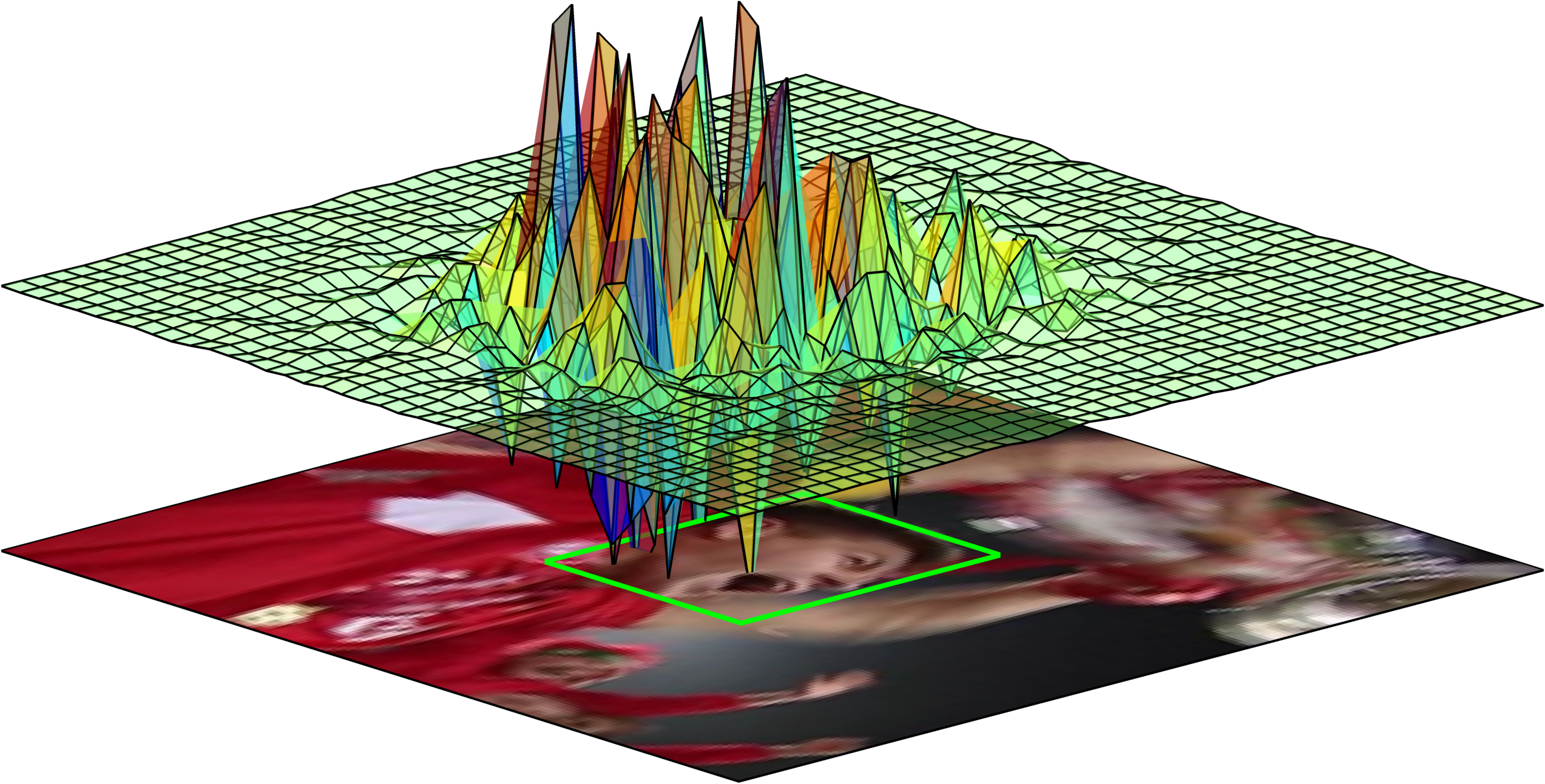Learning Spatially Regularized Correlation Filters for Visual Tracking

In this paper we propose Spatially Regularized Discriminative Correlation Filters (SRDCF) for visual tracking. This effectively mitigates the unwanted boundary effects, which limits the performance of standard correlation based trackers.
We demonstrate a significant performance boost compared to state-of-the-art trackers on four benchmark datasets: OTB-2013, OTB-2015, ALOV300++ and VOT2014. Our tracker achieves an average overlap precision of 78.1% (area-under-the-curve 63.3%) on OTB-2013 and an average F-score of 0.787 on ALOV300++.
The proposed SRDCF tracker won the recent OpenCV State of the Art Vision Challenge in Tracking! (The SRDCF appears with the name DCFSIR, Discriminative Correlation Filter with Spatial Importance Regularization in the results of this challenge.) The SRDCF also achieved the best result in the VOT-TIR2015 challenge and in an independent evaluation on the recent UAV123 dataset presented in ECCV 2016.
In a related ICCV workshop paper, we investigated the impact of deep convolutional features in DCF-based tracking frameworks. We introduced the DeepSRDCF, that employs the first convolutional layer of a CNN in the SRDCF tracking framework. This led to further improved results on all datasets. The DeepSRDCF achieved second place in the VOT2015 challenge and was the best tracker that did not exploit additional tracking data for offline learning.Publication
Martin Danelljan, Gustav Häger, Fahad Khan, Michael Felsberg.
Learning Spatially Regularized Correlation Filters for Visual Tracking.
In Proceedings of the International Conference in Computer Vision (ICCV), 2015.
Poster
Martin Danelljan, Gustav Häger, Fahad Khan, Michael Felsberg.
Convolutional Features for Correlation Filter Based Visual Tracking.
ICCV workshop on the Visual Object Tracking (VOT) Challenge, 2015.
Code
See the GitHub project of our more recent ECO tracking framework, which generalizes the SRDCF. In addition to all the new features in ECO, such as deep features and GPU support, it also includes a newer version of SRDCF.
If you want the old version of SRDCF, there is the original Matlab code for the version used in the paper (using HOG) and the version submitted to VOT 2015 (using HOG and Color Names).
Results
Raw result files for the OTB-2013, OTB-2015, VOT2015, VOT-TIR2015, ALOV300++ and Temple-Color datasets can be downloaded here for the SRDCF and the DeepSRDCF tracker.
Success plot on OTB-2013. The area-under-the-curve for each tracker is shown in the legend.
Survival curves on ALOV300++. The average F-score for each tracker is shown in the legend.
Senast uppdaterad: 2017-06-07
 LiU Homepage
LiU Homepage